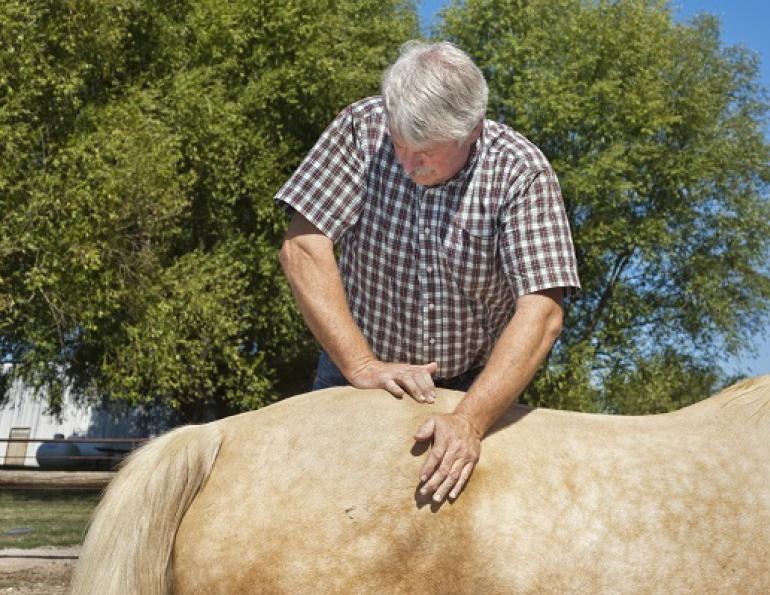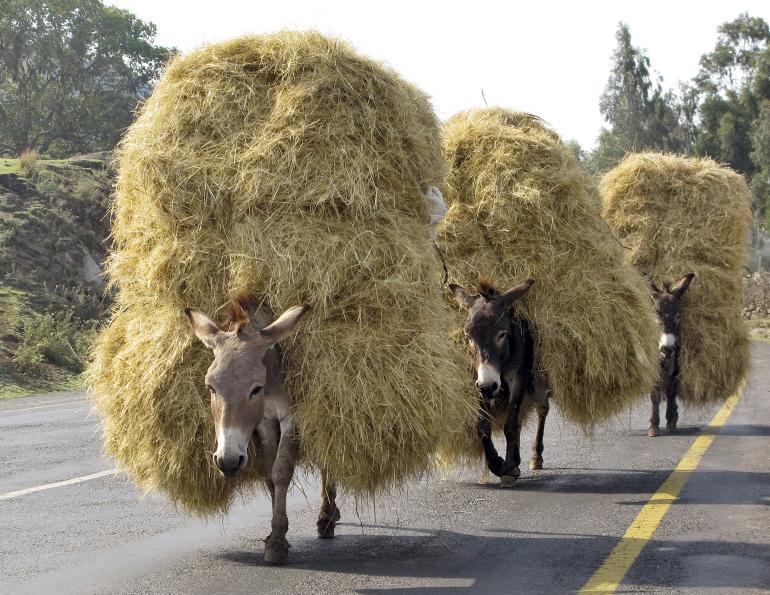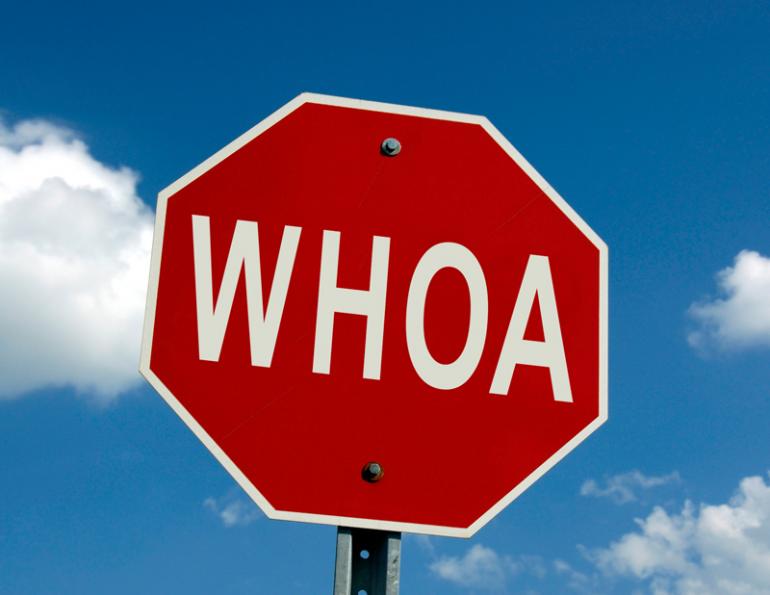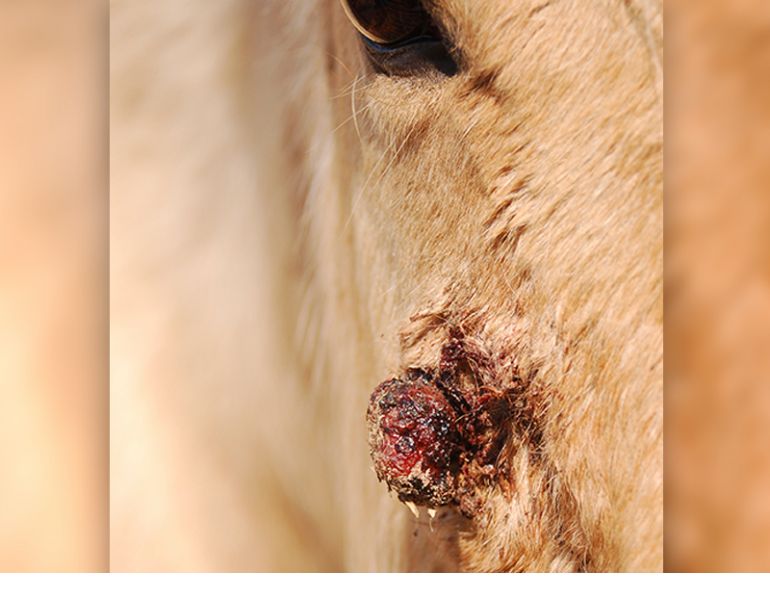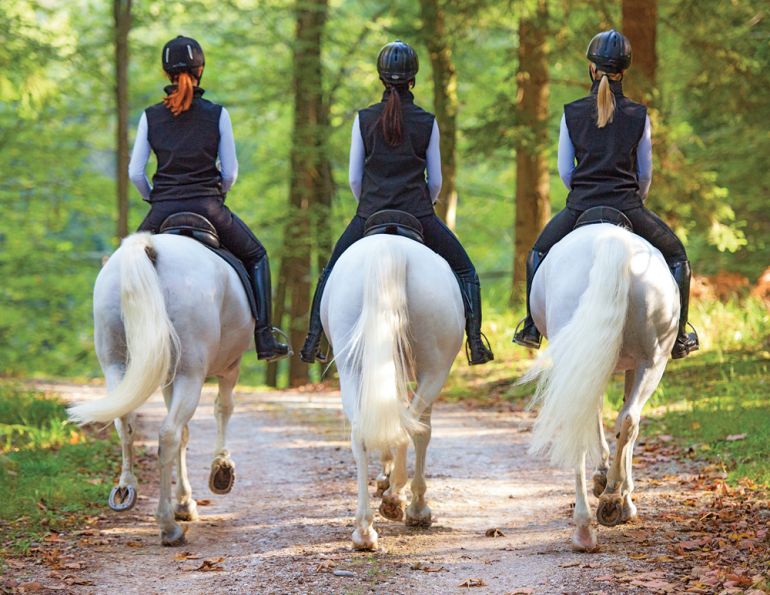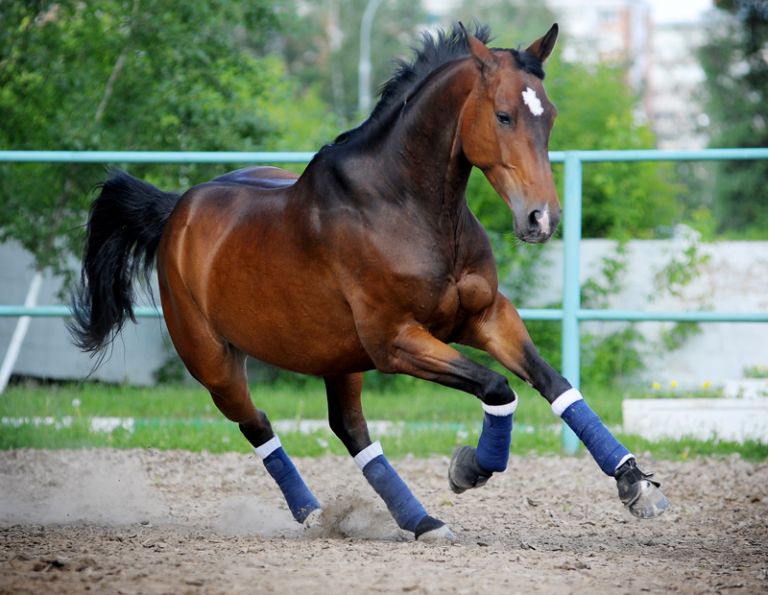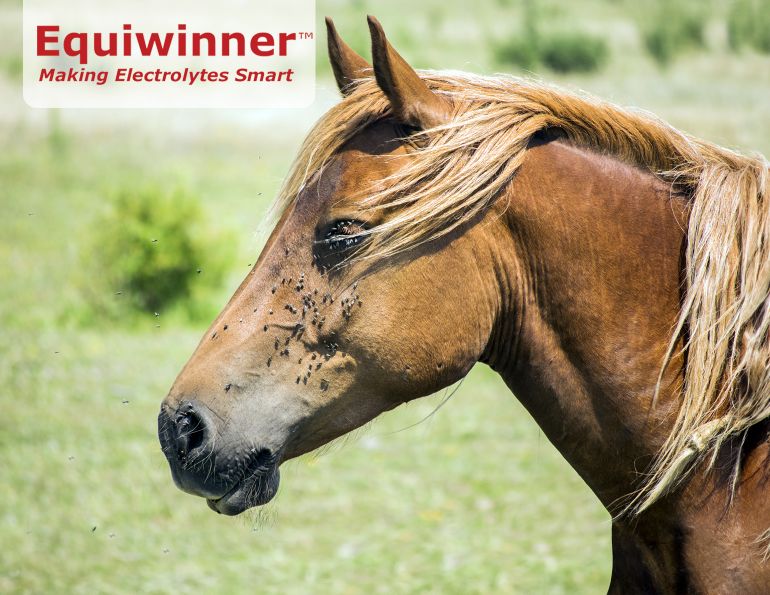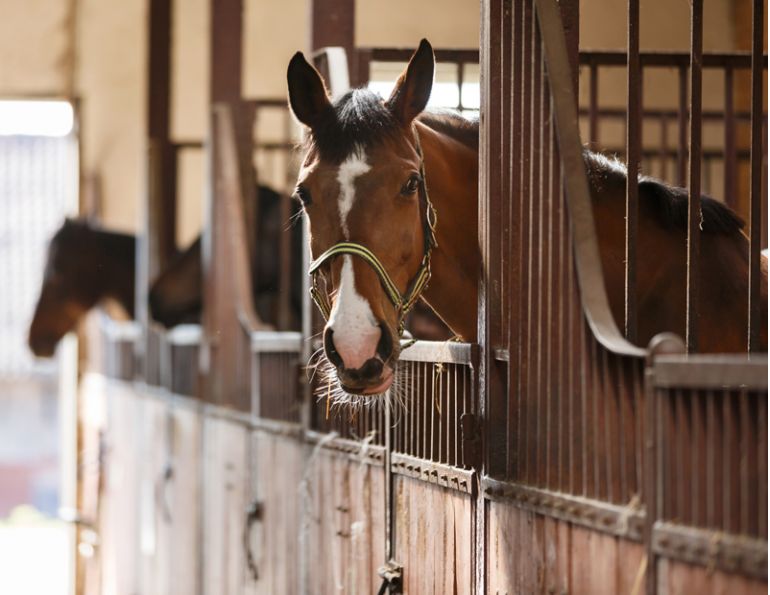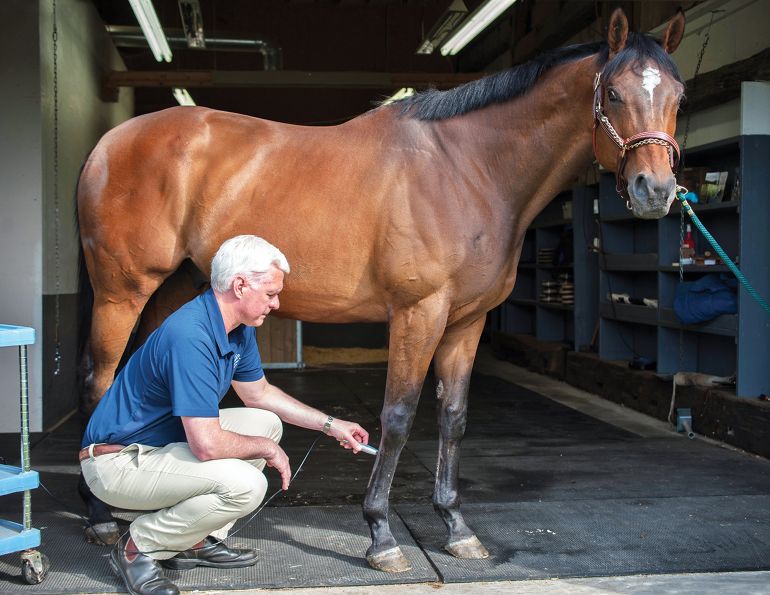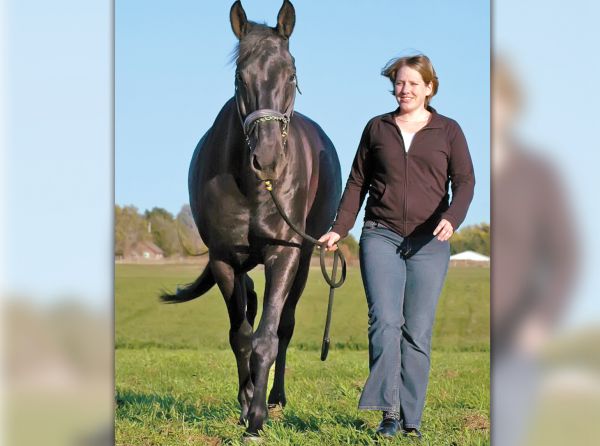An Integrative Approach
By Lindsay Day, REMT
Horse owners today have an array of complementary practices and products to turn to in the care and management of their equine partners. Things like acupuncture, chiropractic and massage are now more widely accessible than ever before. But while the availability and interest in complementary modalities continues to grow, at times what remains less clear is how and when to incorporate these therapies to best effect.
Like any decision relating to your horse’s health care, making informed choices is important. When it comes to complementary therapies, this means getting a clear picture of what they can (and cannot) offer, who has the education and training to safely deliver them, and how they fit in with your horse’s regular veterinary care.
An integrative model
“Complementary modalities work together with conventional medicine,” emphasizes Conny Mosley, an anesthesiologist and instructor at the Ontario Veterinary College who also practices acupuncture. “They give us one more thing to use in addition to veterinary medicine, but they are not a replacement for it. If the horse needs an antibiotic, it needs an antibiotic. If the horse has a fracture, it needs conventional medicine to diagnose and treat that.”
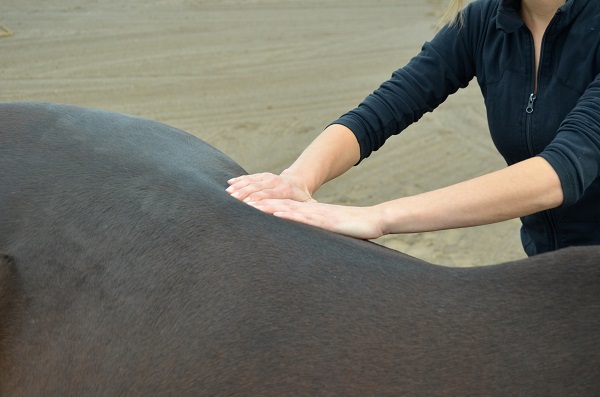
Massage therapists manipulate the soft tissues of the body through the application of varying degrees of pressure and movement. Photos: Ashley Harris Photography
The growing use of complementary therapies alongside conventional veterinary medicine represents a shift towards a more integrative approach to equine health care, she says. The goal is to combine the best of both worlds, while considering all aspects of an animal’s health in their management.
“You look at the diet, exercise, and you consider their mental state too. You want to look at everything to develop a more complete picture of what’s going on for that animal - not just, for example, blood work or other single diagnostic tools we use in veterinary specialties - but all the pieces together.”
How complementary therapies are used
An additional diagnostic tool – Veterinarians trained in acupuncture or chiropractic may sometimes use these modalities as an additional means of assessment when examining a horse. Acupuncture points to which the horse is particularly sensitive or reactive, for example, may help flag an issue or suggest areas for further examination. But this needs to be combined with a thorough veterinary workup, stresses Mosley. “If you were to just rely on acupuncture alone to diagnose, I think you would miss some details, and would be at risk of misdiagnosing the problem if you are inexperienced.”
It is also important to note that non-veterinary therapists are not at liberty to diagnose, says Anna Drygalski, a Registered Equine Massage Therapist based in White Rock, British Columbia. That’s not to say the insights garnered by these practitioners are not of value, but in any instance where a horse is suffering from lameness or ill-health, an accurate veterinary diagnosis is key to ensuring the most appropriate treatment.
Part of the treatment plan – Complementary therapies like massage, chiropractic, and acupuncture are often well suited to address compensatory issues that arise with lameness problems.
“Oftentimes we are dealing with layers of a problem,” says Katie Crossan, DVM who practices chiropractic in addition to regular veterinary medicine out of Kirkton Equine Clinic in London, Ontario. She offers the example of a horse that tends to get stuck in its sacroiliac (SI) joint (where the pelvis connects to the spine) on account of a hock problem. “They’ll end up with muscle spasm around the SI joint because they’ve been hiking their hind end to avoid flexing their hocks.”
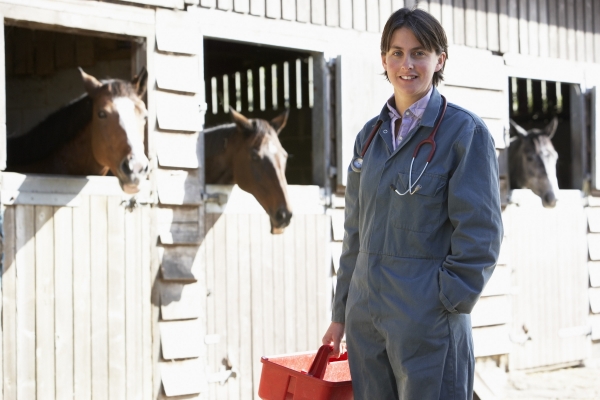
Horse owners employing complementary health care should inform their veterinarian. Practitioners of different modalities can then work together to provide the horse with the best care possible. Photo: monkeybusiness/Cansto
With reduced movement of the pelvis, the lumbar vertebrae compensate by moving more than they are designed to, which in turn leads to more muscle spasm along the lumbar spine, she explained.
“We might need to inject the hocks in the treatment of that horse, but what we find is that if you don’t address all the other issues, it takes much longer to get that horse back to the level it was competing at before. If you leave it to work through all the secondary issues on its own you won’t be nearly as satisfied with the outcome.”
For Crossan, that may also include working with a massage therapist or an acupuncturist. “If you don’t do something to address that muscle spasm, then you have a harder time getting your adjustment to hold, because you really can’t separate out muscle function and joint function.”
Preventative care – Complementary therapies can also play a role in promoting optimal health. “When a horse’s muscles are working correctly, it takes the strain off of ligaments and tendons and joints,” says Drygalski. “A lot of times people will use massage not because there is something wrong with their horse but maybe they have a little bit of trouble with a flying change in one direction or they’re a bit stiffer one way.” Therapies like massage and chiropractic can also help detect subtle changes or areas of tension and restriction early on, before they lead to bigger problems, added Crossan.
Working together to achieve more
Much has changed in the past decade in terms of the acceptance of complementary health care for horses, with practitioners of different modalities often working together with a horse’s vet and owner to provide the best care possible.
“At the end of the day, the more eyes you have on your horse, and the more insights you have, the better you can tailor the management of that horse - so long as everyone is communicating, and on the same page in terms of the horse’s needs,” says Crossan.
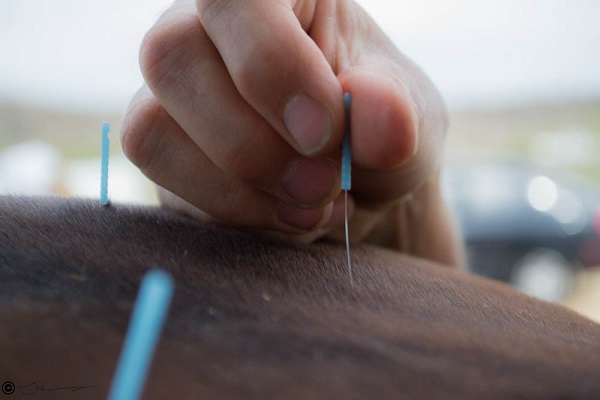
Through the insertion of small needles, acupuncture stimulates specific points on the body. Photo: JC Ced-Con/Flickr
Indeed, as more research begins to support the use of the more widely practiced complementary therapies, a growing number of vets feel comfortable in recommending them. “I’ll get calls from people now because their vet said their horse could use a massage,” says Drygalski. “That didn’t happen 10 years ago.”
In her practice, Drygalski says working as part of a team is important. “That includes vets, chiropractors, saddle-fitters, trainers, and the owners.”
Crossan agrees. “The more you work with different people, the more you know what they are good at and you develop a cohesive team approach. I have a massage therapist and an acupuncturist I work with quite a bit, and we agree that when we both work on an animal together we get better results than if we each did it separately.”
When it comes to finding therapists to work with, Crossan recommends that horse owners start by asking their regular veterinarian. “They will probably have a pretty good idea of who’s practicing in their area and should be able to give you a couple of names.”
Word of mouth and the Internet can be helpful as well, but it’s important to check a therapist’s credentials too, she advised. “I think that’s important, because if they’re serious enough about what they are doing, they’ll have credentials.”
When you decide to work with a therapist, it’s worthwhile keeping your vet in the loop, she added. “Most vets don’t mind if you call. Even if you don’t want them to come out, they can let you know if something is a reasonable option for your horse, or if you might be at risk of missing something else.”
Ultimately, keeping the lines of communication open and making sure everyone is on the same page translates to more coordinated care and better results.
“In terms of getting the most bang for your buck,” says Crossan, “you will have a better experience if you have a team that is open to one another and able to communicate effectively.”
Chiropractic
Chiropractic, or spinal manipulation, is a form of manual therapy that uses controlled forces applied to joints of the spine and limbs. According to the American Association of Equine Practitioners (AAEP), it should be considered a medical act and thus only performed by a licensed veterinarian or human doctor of chiropractic under the referral of a veterinarian.
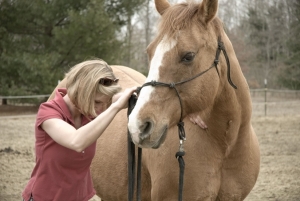
When a joint is immobile for any length of time, the health of the joint is compromised. The chiropractor seeks to restore the normal range of motion. Photo: Brooke Sellers/Flickr
The reasoning behind chiropractic is that when a joint is immobile for any length of time, the health of that joint is compromised. “When a joint is held immobile there is a decrease in the production of joint fluid and an increase in the inflammatory mediators,” says Crossan. Because horses are so good at compensating, reduced motion in one joint can impact the function of others.
“Say for example a horse develops stiffness between C3 and C4 (the third and fourth cervical vertebrae in the neck); they’ll just not move it, and they’ll move the joint above and below a little bit extra to make up for it. The stiff joint can sit for quite some time not moving.”
The reasoning behind chiropractic is that when a joint is immobile for any length of time, the health of that joint is compromised. “When a joint is held immobile there is a decrease in the production of joint fluid and an increase in the inflammatory mediators,” says Crossan. Because horses are so good at compensating, reduced motion in one joint can impact the function of others.
“Say for example a horse develops stiffness between C3 and C4 (the third and fourth cervical vertebrae in the neck); they’ll just not move it, and they’ll move the joint above and below a little bit extra to make up for it. The stiff joint can sit for quite some time not moving.”
Acupuncture
Acupuncture involves the stimulation of specific points on the body, typically through the insertion of small needles. Like chiropractic, acupuncture is generally considered a medical act, and recognized training courses in equine acupuncture in North America are only open to licensed veterinarians (or senior-year veterinary students in some programs).

Traditional Chinese Medicine focusses on stimulation of points along the body’s energy pathways or meridians, which are indicated by the body’s underlying disease. Western medicine focuses on the relationship between acupuncture points and the anatomic location of nerve endings to trigger the release of chemicals and hormones throughout the body.
“Every joint in your body has a set range of motion, and in chiropractic we go through and test that range of motion,” explains Crossan. “When we find a joint that’s not moving freely we adjust that joint to restore motion.” There is a lot of misconception about the therapy, she adds. “When we use the term subluxation, it’s not a matter of a joint being out of place. If you hold your wrist flexed, for example, it’s going to look like you have a bump. But it’s not that you have a joint out of place, it’s just that it’s not moving through its normal range of motion. When you put normal motion back into it, then it sits back where it should be and you don’t see the bump.”
Two main approaches and theories are related to the use of acupuncture. Traditional Chinese Medicine (TCM) maintains that there are energy pathways through the body represented by meridians. Stimulation of points along these pathways is indicated on the basis of the underlying pattern of disease or imbalance, which is assessed according to TCM principles. Practitioners of this approach may also recommend the use of traditional Chinese herbs to help address identified imbalances.
The Western medical approach focuses instead on the relationship between acupuncture points and the anatomic location of nerve endings and other features of the nervous system. The insertion of acupuncture needles (which can also be stimulated with an electric current, as in electroacupuncture) induces the release of chemicals involved in nerve communication, which in turn can trigger the release of other chemicals and hormones through the body. While studies have revealed the pain-relieving effect that acupuncture can have, the mechanisms of action and the role it can play in treating other disease processes is still not fully understood, though research is ongoing.
Massage
Massage therapists use their hands to manipulate the soft tissues of the body (muscle, connective tissue, tendons, ligaments and skin) through the application of varying degrees of pressure and movement. Training and education standards in equine massage vary greatly in terms of program length (from two days to two years) as well as substance. Registered equine massage therapists who use the title REMT complete a two-year course of study (similar to the education requirements for RMT’s who work on people) as well as a veterinary supervised accreditation exam. Other certifications in equine massage are offered by a number of different schools, each with their own qualification requirements. As an unregulated profession, it is ultimately up the horse owner to ask about the training, experience and credentials of a therapist they are considering.

Lindsay Day explains her methodology for massage as a process of listening to the horse’s response and feeling and adapting my pressure, approach, or technique based on that. Photos: Ashley Harris Photography
“We use massage to address muscle tension, or other issues where the soft tissues are affected, such as adhesions or scar tissue,” says Drygalski. Muscles of the body create movement and help stabilize the joints, so when you get excess tension, or restrictions in the connective tissues, that function is compromised. Sore and tight muscles are not healthy muscles. With chronic tension, a muscle’s blood supply is restricted, limiting its access to oxygen, nutrients, and fresh tissue fluids. The related nerve endings become irritated, causing pain and loss of fine-tuned coordination. Massage can help address this pain-tension cycle specifically, but may also be used to promote overall mental and physical relaxation.
Massage therapy may include many techniques such as Swedish massage, sports massage, myofascial release, trigger point therapy, acupressure, and other bodywork approaches. The type of massage given typically depends on the horse’s needs or condition as well as the therapist’s training. Some therapists may also incorporate or recommend basic hydrotherapy and stretches, or other exercises for a horse.
Lindsay Day is a Registered Equine Massage Therapist and award-winning writer based in Guelph, Ontario. www.EQmassage.ca
This article originally appeared in the September 2014 issue of Canadian Horse Journal.
Main Photo: The chiropractor uses controlled forces applied to the joints of the spine and limbs. Photo: iStock/DH



